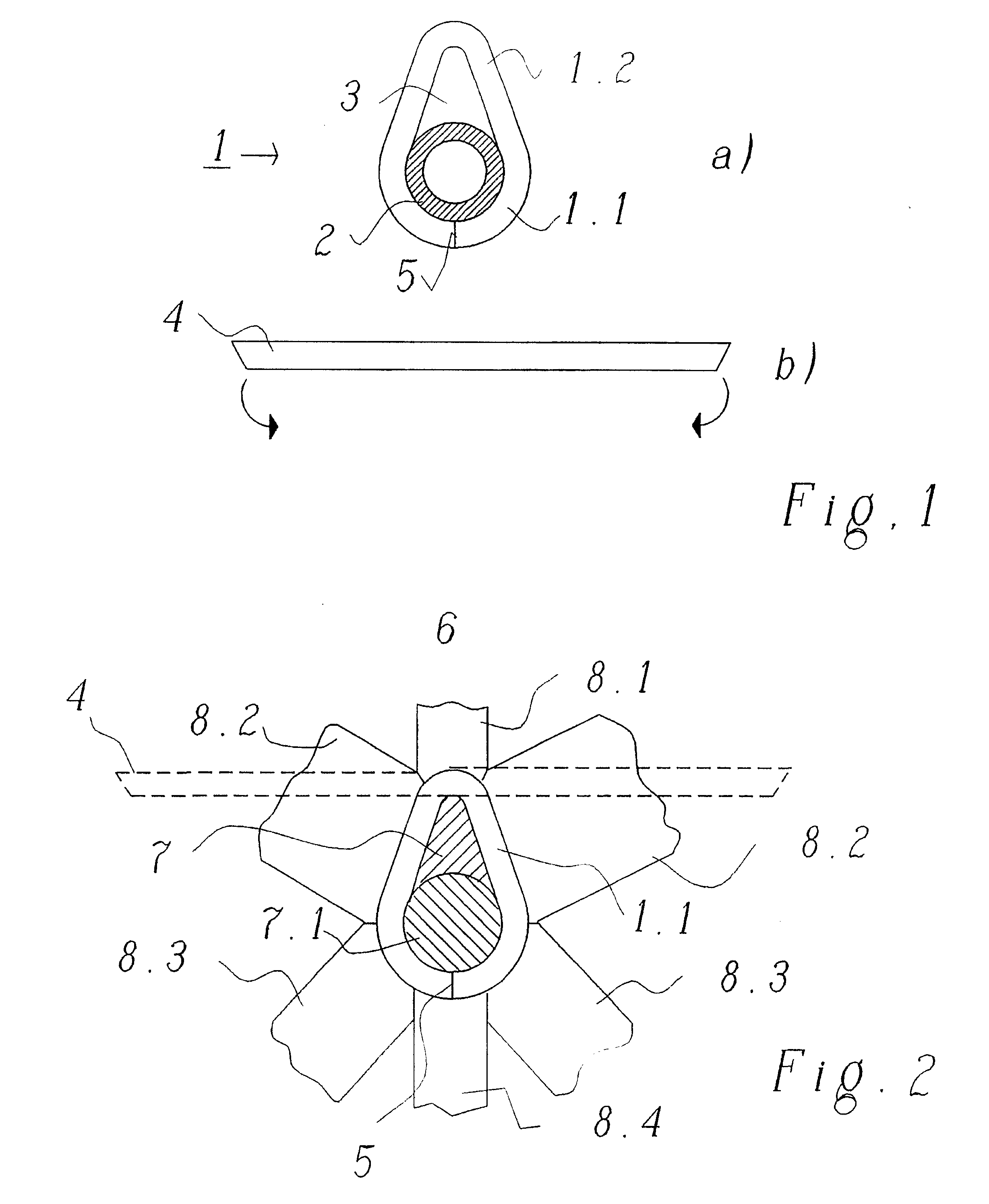Method for producing a cam for a camshaft
a camshaft and camshaft technology, applied in the direction of cams, valve details, couplings, etc., can solve the problems of cam deformation, cam tilt, so-called cam growth variation,
- Summary
- Abstract
- Description
- Claims
- Application Information
AI Technical Summary
Benefits of technology
Problems solved by technology
Method used
Image
Examples
Embodiment Construction
[0033] In FIG. 1, under a), 1 designates a cam according to the invention which is fastened on a hollow-cylindrical shaft 2. The cam 1 has a first portion 1.1, along which it is in bearing contact on the shaft 2 and partially surrounds the latter, and a second portion 1.2 which projects from the shaft and surrounds a cavity 3. The cavity 3 has the advantage that it makes the cam 1 lighter and reduces its moment of inertia. The weight of the entire camshaft and its rotational resistance are thereby also reduced.
[0034] The cam 1 is produced from a profile strip by its ends being bent together. Such a profile strip 4 is shown in FIG. 1 under b), the profile strip 4 still being straight and unbent here. The bending direction of the profile strip 4 is indicated by arrows.
[0035] Preferably, the profile strip 4 is bent in such a way that, after bending, its ends form a butt joint 5 and its end faces butt against one another over their area. For this purpose, it may be advantageous to bevel...
PUM
| Property | Measurement | Unit |
|---|---|---|
| Time | aaaaa | aaaaa |
| Length | aaaaa | aaaaa |
| Time | aaaaa | aaaaa |
Abstract
Description
Claims
Application Information
 Login to View More
Login to View More - R&D
- Intellectual Property
- Life Sciences
- Materials
- Tech Scout
- Unparalleled Data Quality
- Higher Quality Content
- 60% Fewer Hallucinations
Browse by: Latest US Patents, China's latest patents, Technical Efficacy Thesaurus, Application Domain, Technology Topic, Popular Technical Reports.
© 2025 PatSnap. All rights reserved.Legal|Privacy policy|Modern Slavery Act Transparency Statement|Sitemap|About US| Contact US: help@patsnap.com



